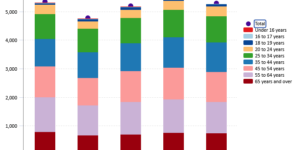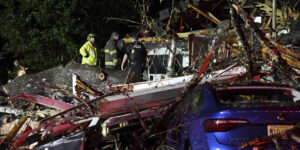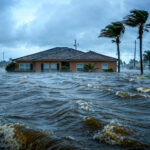 With central Italy reeling from yet another earthquake that hit on Oct. 30, and bracing for many aftershocks to come, AIR Worldwide cautions that there may be gaps there in earthquake insurance coverage. Still, some companies, at least have a government option if they need it.
With central Italy reeling from yet another earthquake that hit on Oct. 30, and bracing for many aftershocks to come, AIR Worldwide cautions that there may be gaps there in earthquake insurance coverage. Still, some companies, at least have a government option if they need it.
“Italy’s nonlife insurance market is the eighth largest in the world and fifth largest in Europe; It’s property insurance market is the second-largest nonlife market in the country after automobile,” AIR Worldwide said in its Oct. 31 media briefing. “However, earthquake coverage is often not included in standard homeowners’ policies and is typically issued as an extension of fire policies.”
AIR Worldwide said that industrial and commercial insurance coverage sometimes includes earthquake coverage at an additional premium, but that varies by region.
If need be, “the government budget includes provisions for post-disaster insurance payouts instead of a state pool or catastrophe fund into which companies can contribute,” AIR Worldwide said.
A magnitude 6.6 earthquake severely damaged the central Italian town of Norcia on Oct. 30, 56 miles north of Rome. AIR Worldwide said the quake was the strongest in the region since 1980. The quake was also worse than the magnitude 6.2 event that several damaged the historic town of Amatrice on Aug. 24. Since then, more than 40 earthquakes of magnitude 4.0 and larger have been hitting the region.
For this latest earthquake, AIR Worldwide said there were no reports of casualties, as many residents had already left the region because of the earlier events. But it has produced dozens of aftershocks, which are expected to continue for weeks or longer.
What’s more, AIR Worldwide said the Oct. 30 earthquake severely damaged historic buildings in Norcia and even Rome, and added to damage already dealt by recent quakes.
AIR noted that most buildings in Italy are constructed with unreinforced masonry, reinforced masonry or reinforced concrete construction. But because most buildings were constructed before the introduction of comprehensive seismic building codes and modern construction technology, the risk of earthquake-related collapse for buildings constructed before 1980 is very high.
Source: AIR Worldwide





















 National Flood Insurance Program Authorized to Continue Through Mid-March
National Flood Insurance Program Authorized to Continue Through Mid-March  Viewpoint: Strategies for Brokers as M&A Slows and Insurance Rates Soften
Viewpoint: Strategies for Brokers as M&A Slows and Insurance Rates Soften  Most Distracting Holiday Songs for Drivers Ranked
Most Distracting Holiday Songs for Drivers Ranked  Four P/C Insurers Are ‘AI Titans’; AI Impact Leaders Revealed: Research
Four P/C Insurers Are ‘AI Titans’; AI Impact Leaders Revealed: Research 







